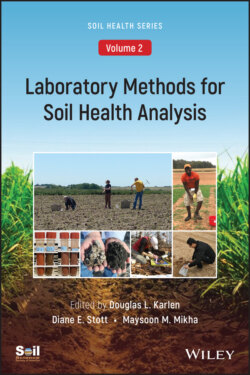Читать книгу Laboratory Methods for Soil Health Analysis, Volume 2 - Группа авторов - Страница 44
Origin and Factors Affecting SOC
ОглавлениеSoil organic carbon is derived primarily from plant residues with transformations and storage of SOC being a function of biotic, chemical, and physical properties and processes interacting with plant residue quality or biochemistry as well as its accessibility to organisms. Plant residues are decomposed by soil microorganisms and most of the plant C is released to the atmosphere as CO2. Approximately 10 to 20% of the C in plant residue becomes SOM, sometimes referred to as “humus.” A portion of this C can persist in soils for hundreds to thousands of years. The theoretical potential for soil C storage is a function of climate and basic soil characteristics, while the amount of C residing in the soil is a function of plant and soil management.
Tillage and organic residue input are two primary drivers influencing organic carbon levels in soils. Soil disturbance (i.e., tillage) disrupts soil aggregates and decreases physical protection by exposing C within soil aggregates to microbial decomposition, which results in a conversion of organic carbon to carbon dioxide.
Development of conservation agriculture practices (e.g., no‐till, permanent soil cover, and crop rotation) have increased SOC. These and other advancements in crop and soil management practices (e.g., drought and insect resistance) have the potential to restore and improve soil health. A reduction in tillage intensity, with no‐tillage being the least disruptive, allows macroaggregate formation and reduces degradation of SOC. Minimum‐ or conservation‐tillage also conserves soil C through decreased oxidation and less soil erosion than with more intensive tillage practices. Cropping intensity and diversification can also impact SOC levels by varying the amount and quality (e.g., C/N ratio) of plant residue added to the soil. Likewise, the presence of cover crop roots during the intercrop period can release exudates into the soil and contribute to greater macroaggregate formation by increasing microbial biomass and fungal networks.
In agriculture, high residue producing crops, such as corn, wheat, and sorghum tend to sustain or increase soil C. Eliminating summer fallow, a practice traditionally used in the U.S. Great Plains, can increase soil C by providing more plant material on an annual basis. In those areas where sufficient soil water is available, double cropping to produce two crops or more crops per year may be a viable practice. In grassland systems, perennial crops also tend to increase SOC because there is no‐tillage, and organic C is added through root turnover.
